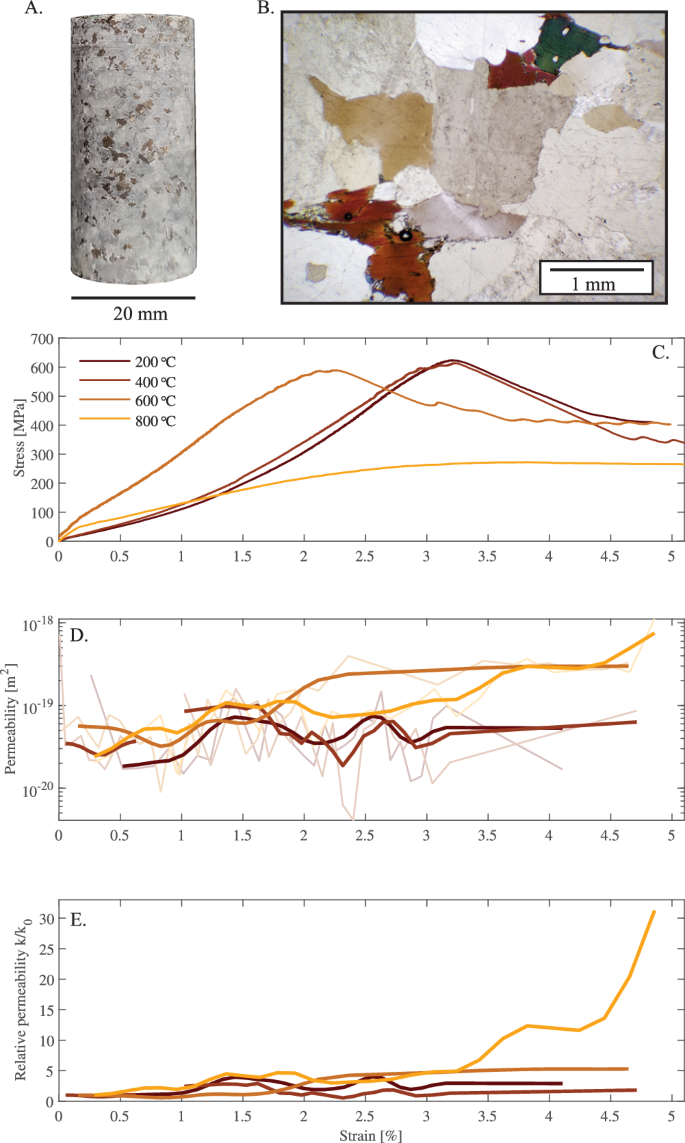2024-10-08 スイス連邦工科大学ローザンヌ校(EPFL)
<関連情報>
- https://actu.epfl.ch/news/scientists-explore-the-complexity-of-rocks-within-/
- https://www.nature.com/articles/s41467-024-52092-0
脆性-延性遷移による浸透性分配と超臨界地熱貯留層への影響 Permeability partitioning through the brittle-to-ductile transition and its implications for supercritical geothermal reservoirs
Gabriel G. Meyer,Ghassan Shahin,Benoît Cordonnier & Marie Violay
Nature Communications Published05 September 2024
DOIhttps://doi.org/10.1038/s41467-024-52092-0

Abstract
Geothermal projects utilizing supercritical water (≥400 °C) could boost power output tenfold compared to conventional plants. However, these reservoirs commonly occur in crustal areas where rocks are semi-ductile or ductile, impeding large-scale fractures and cracking, and where hydraulic properties are largely unknown. Here, we explore the complex permeability of rocks under supercritical conditions using mechanical data from a gas-based triaxial apparatus, high-resolution synchrotron post-mortem 3D imagery, and finite element modeling. We report a first order control of strain partitioning on permeability. In the brittle regime, strain localizes on permeable faults without necessarily increasing sample apparent permeability. In the semi-ductile regime, distributed strain increases permeability both in deformation bands and the bulk, leading to a more than tenfold permeability increase. This study challenges the belief that the brittle-ductile transition (BDT) marks a cutoff for fluid circulation in the crust, demonstrating that permeability can develop in deforming semi-ductile rocks.



